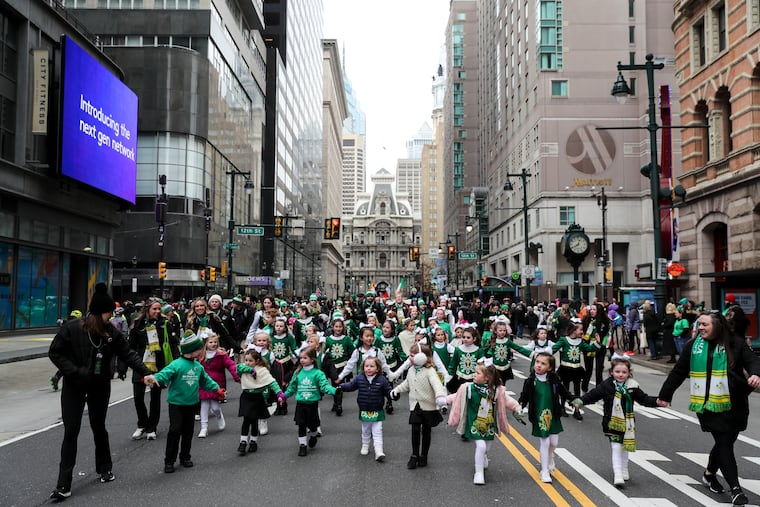How Irish is Philly? Pretty Irish.
Philadelphia may not have the oldest St. Patrick’s Day parade in the country and doesn’t dye the Schuykill green this time of year, but there’s no denying the city remains pretty Irish.

Philadelphia might not have the oldest St. Patrick’s Day parade in the country and doesn’t dye the Schuylkill green this time of year, but there’s no denying the city remains pretty Irish, on multiple fronts.
More than 150,000 people, close to 10% of the city’s population, are of Irish ancestry, according to the latest U.S. Census data. Though this estimate is limited because not everyone puts down their ancestry, knows it, or some lie, active members of the Irish community say the numbers align with what they see on the ground.
In ways big — the second-oldest St. Patrick’s Day parade in the country — and small — think Irish dance performances — the city’s ties to Irish culture remain strong, buoyed by the American-born hoping to connect with their roots.
“Something I think of a lot is none of my students were born in Ireland,” said Justina Leavesley, 44, who opened Riley Irish Dance about a decade ago in Philly.
Many of her students, ages 5 to 17, started dancing because their parents did it when they were younger or because they saw dancers perform at an event or parade. Leavesley said they stick with it because they learn about team-building, learn traditions dating hundreds of years, and grow an appetite for dance competitions.
This year, LawnStarter, a lawn-care start-up that runs its own array of studies such as “2023′s Most Irish Cities in America,” knocked down Philly’s Irishness a peg for having too few Irish dance schools. Leavesley and others say schools alone can’t quantify just how much the art is still celebrated in the city.
Two categories where the city did excel by LawnStarter metrics are the number of Irish restaurants and pubs and local Irish clubs. Philly sits in the top five for each category.
Jerry Connor, 48, president of the Irish Society of Philadelphia, said the city is full of these sorts of clubs and restaurants. Like cultural performances and parades, these organizations and establishments act as hubs for the very Irish tradition of storytelling, keeping each other abreast of the comings and goings of various neighborhoods.
Often, said Connor, people are also looking to help others in the community when getting together.
“It’s a strong network,” Connor said. “You see it casually and formally with events and awards dinners. If you want to pursue something in a professional manner or hobby, you’re one phone call away from getting that information and someone pointing you in the right direction.”
Patrick McGinley, 51, owner of Bonk’s Bar in Port Richmond and Boss Murphy’s next door for special events, said pubs and clubs have historically played a role in connecting Americans of Irish ancestry with the politics of Ireland.
McGinley experienced this firsthand in 1998 while working at the Plough & the Stars.
After then-president of Sinn Féin Gerry Adams — a man credited with helping broker the truce that helped lead to the Good Friday Agreement — spoke at the World Affairs Council in Philadelphia in October 1998, he went to the Old City bar. An Inquirer report of that day described “a boisterous crowd of supporters seeking autographs and pictures,” but for McGinley, the experience fueled an already budding interest in the country his grandfather left in 1916.
During Brexit talks, McGinley went so far as to join a delegation from the Philadelphia Irish Society to the Leinster House, the seat of the Irish parliament in Dublin, to support concerns raised by Ireland.
McGinley said the clubs and pubs have created long-lasting friendships between people in Ireland and those living in Irish pockets of the city such as the Far Northeast. (Here’s a census map showing where people of Irish ancestry can be found.)
“People from Ireland that come to Philadelphia can easily make connections and just get into the fold of Philadelphia and the Irish community that’s here,” said McGinley. “There’s that camaraderie here.”
And maybe the last point is Philly’s most Irish trait of all.